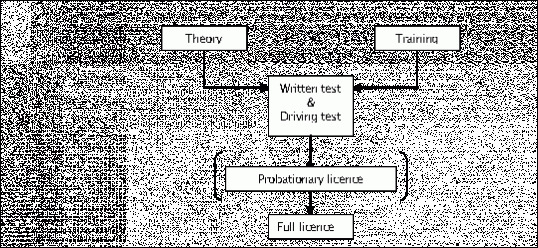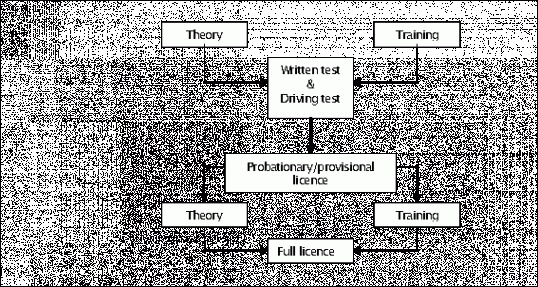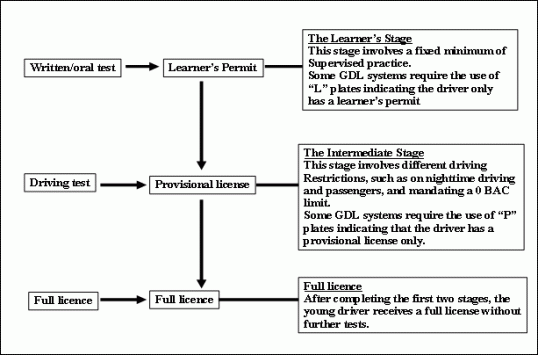- Age of access
- Content of training: Best practice
- Countermeasures
- ITS
- Specific post licence measures for novice drivers
- The Driver Test
- The need for early education
- Training Method
The primary aim of licensing systems is to exclude individuals with insufficient driving ability and competence. Licensing systems are based on laws and regulations referring to the requirements for being licensed (e.g. age, driving aptitude), the quality of licenses (e.g. restrictions), the administrative procedures for licensing (e.g. licensing, withdrawal) and fitness to drive. Systems differ more or less regarding the items that are tested, the formal procedures and the institutions within the system.
Although in each country the licensing system is unique in terms of content and organisation, in general two distinct categories of licensing systems can be distinguished: (a) traditional and probationary licensing systems and (b) graduated licensing systems (GDL).
Traditional
In this system, a driver is fully licensed after passing the driver test, and no special conditions apply to the novice driver (Figure 13). Today most countries using a 'single-phase licensing system' have also introduced a probationary licence. Consequently, the novice driver does not become a fully licensed driver until he or she has completed a probationary period, which could include demerit points, and restrictions like zero BAC.
Figure 13: The structure of the singe-phase licensing system. Adapted from Engström et al 2003 p. 100
A variation to this is the 'two-phased system' (Figure 14), in which candidates get a provisional licence after having completed the first phase, allowing them to drive solo. Only after completing the second phase of theory and training, but without further testing, the full licence is acquired.
Figure 14: The structure of the two-phase licensing system. Adapted from Engström et al, 2003
Graduated licensing
The basic principle of graduated licensing (GDL) is to allow new drivers to acquire driving experience under low risk conditions. Initially the novice driver is only allowed to drive under low risk conditions like supervised driving and restrictions such as not carrying passengers. With growing experience, more driving privileges are phased in gradually. GDL systems are typically divided in three stages of progressively increasing difficulty during a longer learning process with protective learning conditions.
Figure 15: The structure of graduated licensing Engström et al 2003
Most evaluations of the graduated driving license conducted to date, have reported significant reductions in crashes and fatalities. However, they show great variation, some reporting effects as large between 10 to 60%. It should be borne in mind though, that the graduated driving license is only implemented in the USA, Australia and New Zealand. The evaluation studies have shown positive improvements compared to their 'old' licensing systems. These systems however are less 'advanced' compared to the European licensing systems. This implies that the magnitude of the effect of graduated driving license in Europe may be smaller.
-->


